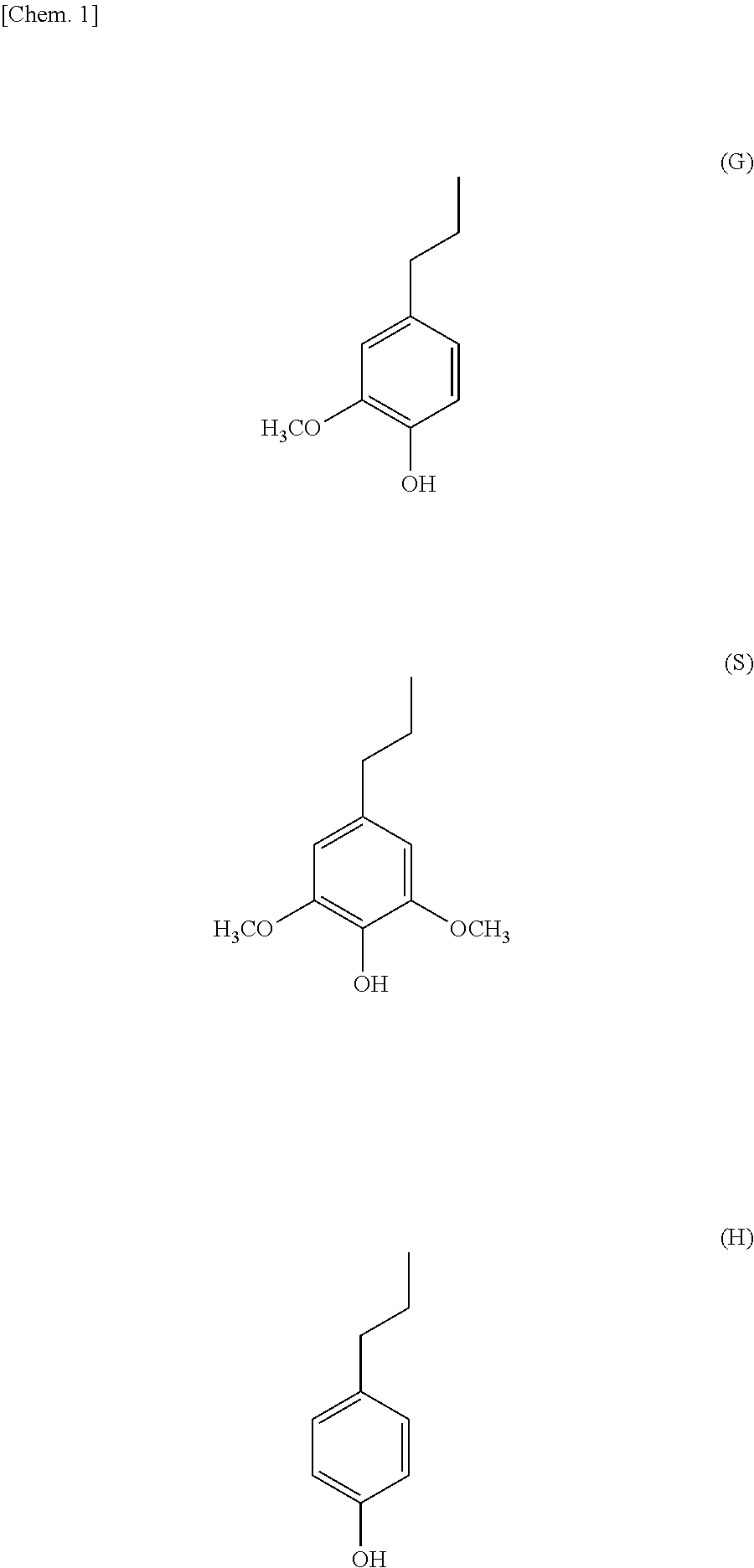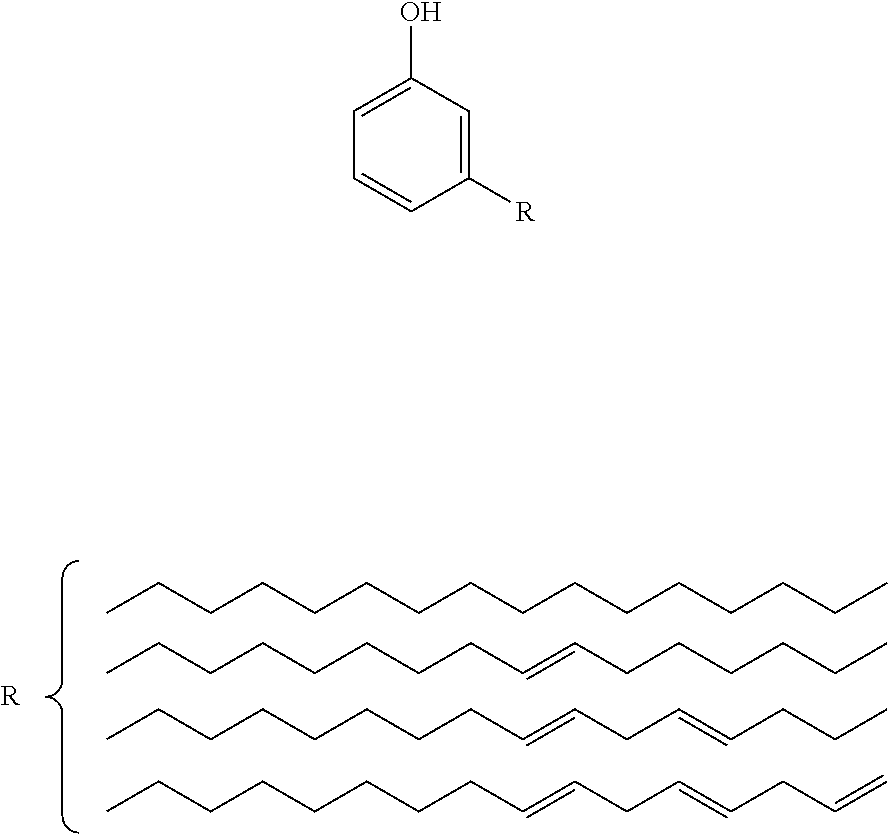Friction material
- Summary
- Abstract
- Description
- Claims
- Application Information
AI Technical Summary
Benefits of technology
Problems solved by technology
Method used
Image
Examples
Example
Test Example 1
Preparation of Lignin-Phenol Resins
[0082]A lignin (manufactured by Harima Chemicals Inc., product name: HIGH-PURITY LIGNIN, softening point: 165° C.) extracted from a gramineous plant by a soda cooking method was purified with methanol to obtain a lignin (weight average molecular weight: 1,600) having a softening point of 126° C. A method for measuring the softening point will be described later.
[0083]The lignin purified and phenol (manufactured by Wako Pure Chemical Industries, Ltd.) were added into a three-necked flask at ratios shown in Table 1, followed by stirring at 80° C. for 30 minutes. Thereafter, a 37% aqueous solution of formaldehyde and oxalic acid (1.5 mol %) were added thereto, followed by stirring at 100° C. for 1 hour. Next, distillation under reduced pressure was performed while increasing the temperature up to 180° C. to remove water and unreacted phenol, thereby obtaining lignin-phenol resins A to C.
TABLE 1(parts by mass)Binder resinResin AResin BRes...
Example
Test Example 2
Preparation of Cardanol-Modified Lignin-Phenol Resins
[0098]A lignin (manufactured by Harima Chemicals Inc., softening point: 165° C.) extracted from a gramineous plant by a soda cooking method was purified with methanol to obtain a lignin (weight average molecular weight: 1,600) having a softening point of 126° C. A method for measuring the softening point will be described later.
[0099]The lignin purified, phenol (manufactured by Wako Pure Chemical Industries, Ltd.) and a cardanol (manufactured by Cashew Co., Ltd.) were added into a three-necked flask at ratios shown in Table 5, followed by stirring at 80° C. for 30 minutes. Thereafter, a 37% aqueous solution of formaldehyde and oxalic acid (1.5 mol %) were added thereto, followed by stirring at 100° C. for 1 hour. Next, distillation under reduced pressure was performed while increasing the temperature up to 180° C. to remove water and unreacted phenol, thereby obtaining cardanol-modified lignin-phenol resins A to C.
[0...
PUM
| Property | Measurement | Unit |
|---|---|---|
| Softening point | aaaaa | aaaaa |
| Molecular weight | aaaaa | aaaaa |
| Friction | aaaaa | aaaaa |
Abstract
Description
Claims
Application Information
 Login to View More
Login to View More - R&D
- Intellectual Property
- Life Sciences
- Materials
- Tech Scout
- Unparalleled Data Quality
- Higher Quality Content
- 60% Fewer Hallucinations
Browse by: Latest US Patents, China's latest patents, Technical Efficacy Thesaurus, Application Domain, Technology Topic, Popular Technical Reports.
© 2025 PatSnap. All rights reserved.Legal|Privacy policy|Modern Slavery Act Transparency Statement|Sitemap|About US| Contact US: help@patsnap.com


